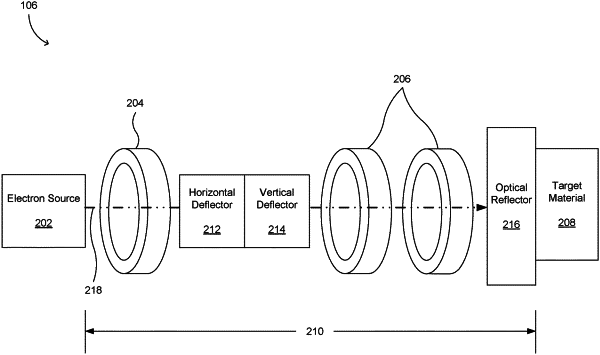| CPC A61L 2/10 (2013.01) [A61L 2/26 (2013.01); A61L 2202/11 (2013.01)] | 19 Claims |

|
1. An antimicrobial device, comprising: an ultraviolet (UV) module, comprising:
an electron source to provide a free electron;
an extractor to extract the free electron from the electron source and direct the free electron in a first direction towards a target material with a first amount of energy;
one or more path electrodes disposed between the extractor and the target material, the one or more path electrodes configured to increase the energy of the free electron from the first amount of energy to a second amount that is at least 5.3 electron volts (eV);
the target material comprising a quantum confined material or quantum dot configured to receive the free electron and, in response, produce a photon having a wavelength within a wavelength range of 200-230 nanometers (nm);
an exit window disposed on the target material, the exit window configured to permit photons produced by the target material to pass therethrough; and
a parabolic optical reflector disposed entirely between the extractor and the target material, the parabolic optical reflector configured to permit free electrons to pass along a transmission path to the target material and to reflect photons produced by the target material outwardly through the exit window.
|
|
12. A device, comprising:
an electron source configured to provide a free electron;
an extractor configured to direct the free electron from the electron source along a transmission path towards a target material that is spaced apart from the electron source;
the target material comprising one or more boron nitride quantum dots or quantum confined material configured to receive the free electron and, in response, produce one or more photons having a wavelength within a wavelength range of 200-230 nanometers (nm); and
a parabolic optical reflector disposed entirely between the extractor and the target material, the parabolic optical reflector configured to reflect photons produced by the target material outwardly from the device; and
wherein the axis of symmetry of the parabolic optical reflector is parallel to a transmission path from the extractor to the target material.
|